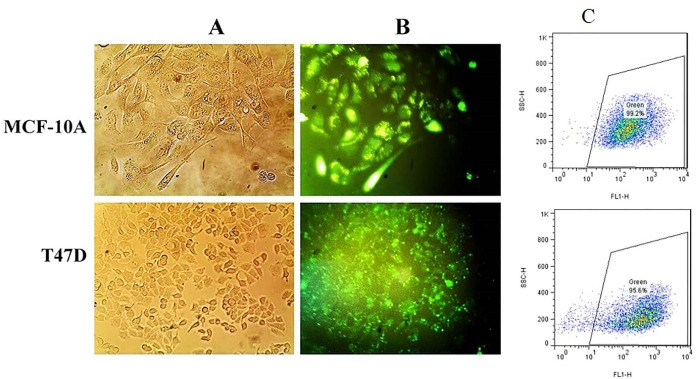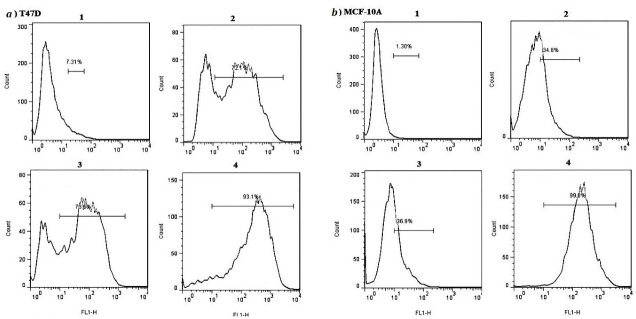Comparative Evaluation of Lipofectamine and Dendrimer for Transfection of Short RNA Into Human T47D and MCF-10A Cell Lines.
IF 3.1
Q2 PHARMACOLOGY & PHARMACY
引用次数: 1
Abstract
Purpose: Non-viral transfection approaches are extensively used in cancer therapy. The future of cancer therapy lies on targeted and efficient drug/gene delivery. The aim of this study was to determine the transfection yields of two commercially available transfection reagents (i.e. Lipofectamine 2000, as a cationic lipid and PAMAM G5, as a cationic dendrimer) in two breast cell lines: cancerous cells (T47D) and non-cancerous ones (MCF-10A). Methods: We investigated the efficiencies of Lipofectamine 2000 and PAMAM G5 for transfection/delivery of a labeled short RNA into T47D and MCF-10A. In addition to microscopic assessments, the cellular uptakes of the complexes (fluorescein tagged-scrambled RNA with Lipofectamine or PAMAM dendrimer) were quantified by flow cytometry. Furthermore, the safety of the mentioned reagents was assessed by measuring cell necrosis through the cellular PI uptake. Results: Our results showed significantly better efficiencies of Lipofectamine compared to PAMAM dendrimer for short RNA transfection in both cell types. On the other hand, MCF-10A resisted more than T47D to the toxicity of higher concentrations of the transfection reagents. Conclusion: Altogether, our research demonstrated a route for comprehensive epigenetic modification of cancer cells and depicted an approach to efficient drug delivery, which eventually improves both short RNA-based biopharmaceutical industry and non-viral strategies in epigenetic therapy.



脂质体和树状大分子转染短RNA入人T47D和MCF-10A细胞系的比较评价
目的:非病毒转染方法广泛应用于肿瘤治疗。癌症治疗的未来在于靶向和有效的药物/基因传递。本研究的目的是确定两种市售转染试剂(即Lipofectamine 2000,作为一种阳离子脂质和PAMAM G5,作为一种阳离子树状大分子)在两种乳腺细胞系中的转染产量:癌细胞(T47D)和非癌细胞(MCF-10A)。方法:我们研究了Lipofectamine 2000和PAMAM G5转染/递送标记短RNA到T47D和MCF-10A的效率。除了显微镜评估外,通过流式细胞术定量了复合物(荧光素标记的RNA与脂质体或PAMAM树突状物)的细胞摄取。此外,通过细胞PI摄取测量细胞坏死来评估上述试剂的安全性。结果:我们的研究结果显示,在两种细胞类型中,Lipofectamine的短RNA转染效率明显高于PAMAM树突状分子。另一方面,MCF-10A比T47D更能抵抗较高浓度转染试剂的毒性。总之,我们的研究展示了一种全面的癌细胞表观遗传修饰途径,并描绘了一种有效的药物递送方法,最终改善了基于短rna的生物制药行业和非病毒表观遗传治疗策略。
本文章由计算机程序翻译,如有差异,请以英文原文为准。
求助全文
约1分钟内获得全文
求助全文
来源期刊

Advanced pharmaceutical bulletin
PHARMACOLOGY & PHARMACY-
CiteScore
6.80
自引率
2.80%
发文量
51
审稿时长
12 weeks
 求助内容:
求助内容: 应助结果提醒方式:
应助结果提醒方式:


